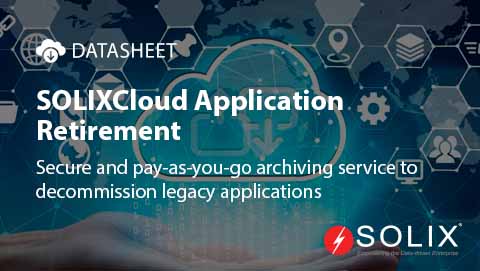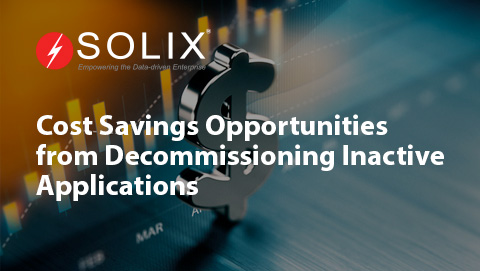
Application Retirement 2025 What You Need to Know
If youre navigating the complex landscape of application management, you might be wondering What is application retirement 2025, and how will it affect my organization Well, youre not alone. Many businesses are currently evaluating their software ecosystems, especially with the impending deadline of 2025 looming on the horizon. Application retirement, in this context, refers to the strategic process of phasing out outdated or redundant applications. Understanding what this entails and how to manage it effectively can be crucial to maintaining operational efficiency and ensuring data compliance.
Lets dive deeper into the concept of application retirement, specifically as we approach the pivotal year of 2025. This is not just a trend but a necessity as technology advances and the landscape of data management evolves.
Why Is Application Retirement Important
Imagine holding onto an old mobile phone that can barely run basic functions, while a powerful new model sits unused in your drawer. Holding onto outdated applications can slow down your entire organization, just like that phone. In 2025, many applications will likely be at risk of becoming obsolete, leading to increased security vulnerabilities and operational inefficiencies.
Application retirement 2025 helps streamline processes by encouraging organizations to evaluate which applications are still serving their needs and which are not. Its an exercise in efficiency and sustainability, particularly important in a rapidly changing tech climate.
The Process of Application Retirement
Retiring an application is more than just pressing delete. The process involves a thorough assessment of your current applications, which can be broken down into several key steps
1. Evaluation Start with a thorough analysis of your existing applications. Which ones are actively used Which are rarely accessed Gather feedback from users to identify bottlenecks and pain points.
2. Consideration of Alternatives For applications that are no longer serving their purpose, research alternative options. This could mean upgrading to a newer version or transitioning to a completely different software solution. To ease this transition, Solix offers powerful tools like their Data Lifecycle Management solution.
3. Data Migration If you find that an application is no longer effective, ensure that all relevant data is safely migrated to the new solution. This process is crucial for maintaining data integrity and compliance.
4. Decommissioning Once data is migrated and all users have transitioned, you can proceed to officially retire the application. Make sure to follow best practices for data destruction to avoid any potential security vulnerabilities.
Challenges to Anticipate
While the benefits of application retirement are clear, the journey isnt without challenges. Resistance from team members is common when contemplating outdated applications. Employees may have grown attached to certain programs, or they may fear change. My own experience shows that transparent communication is key. When I faced similar challenges in a previous role, facilitating open discussions allowed us to address concerns and promote acceptance.
Another challenge is ensuring that the data you migrate is accurate and complete. Missing or incorrect data can lead to significant operational hiccups. A robust data management strategy can mitigate these challenges, ensuring that the sensitive information is handled correctly throughout the application retirement process.
The Connection to Solix
As we approach application retirement 2025, embracing data management tools becomes increasingly vital. Solix provides several solutions that can help ease the process while maintaining compliance and efficiency. For example, their Data Lifecycle Management solution aids organizations in managing their data effectively, ensuring that data is archived or retired in line with business requirements and regulatory standards.
Imagine walking through a retirement process with the support of advanced data management toolsensuring that every step of migration is seamless and secure. Thats what partnering with Solix can offer your organization.
Key Takeaways
As you move forward with your plans for application retirement 2025, remember the following key points
- Evaluate your applications regularly to understand their relevance to your organizational goals.
- Prioritize data security and integrity during the retirement process.
- Communicate openly with your team to promote buy-in and ease any transitions.
- Leverage robust solutions, like those from Solix, to support your application retirement strategy.
Wrap-Up
In wrap-Up, application retirement 2025 is not just another IT buzzword; its a critical step towards optimizing your organizations technological infrastructure. By understanding the retirement process, acknowledging the challenges, and utilizing tools from trusted partners like Solix, you can ensure that your organization remains agile and responsive to the needs of the future.
For organizations looking to navigate this process, I encourage you to reach out to Solix for further consultation. Their expertise can provide valuable insights and assistance as you plan for application retirement 2025. Feel free to call 1.888.GO.SOLIX (1-888-467-6549) or contact them through their contact page
About the Author
Hi, Im Sam. Over the years, Ive navigated the complexities of application management and data governance. My passion for technology helps me guide organizations through important transitions, including application retirement 2025. I believe in leveraging data to enhance decision-making and improve operational effectiveness.
Disclaimer The views expressed in this blog are my own and do not necessarily represent the official position of Solix.
Sign up now on the right for a chance to WIN $100 today! Our giveaway ends soon‚ dont miss out! Limited time offer! Enter on right to claim your $100 reward before its too late!
DISCLAIMER: THE CONTENT, VIEWS, AND OPINIONS EXPRESSED IN THIS BLOG ARE SOLELY THOSE OF THE AUTHOR(S) AND DO NOT REFLECT THE OFFICIAL POLICY OR POSITION OF SOLIX TECHNOLOGIES, INC., ITS AFFILIATES, OR PARTNERS. THIS BLOG IS OPERATED INDEPENDENTLY AND IS NOT REVIEWED OR ENDORSED BY SOLIX TECHNOLOGIES, INC. IN AN OFFICIAL CAPACITY. ALL THIRD-PARTY TRADEMARKS, LOGOS, AND COPYRIGHTED MATERIALS REFERENCED HEREIN ARE THE PROPERTY OF THEIR RESPECTIVE OWNERS. ANY USE IS STRICTLY FOR IDENTIFICATION, COMMENTARY, OR EDUCATIONAL PURPOSES UNDER THE DOCTRINE OF FAIR USE (U.S. COPYRIGHT ACT § 107 AND INTERNATIONAL EQUIVALENTS). NO SPONSORSHIP, ENDORSEMENT, OR AFFILIATION WITH SOLIX TECHNOLOGIES, INC. IS IMPLIED. CONTENT IS PROVIDED "AS-IS" WITHOUT WARRANTIES OF ACCURACY, COMPLETENESS, OR FITNESS FOR ANY PURPOSE. SOLIX TECHNOLOGIES, INC. DISCLAIMS ALL LIABILITY FOR ACTIONS TAKEN BASED ON THIS MATERIAL. READERS ASSUME FULL RESPONSIBILITY FOR THEIR USE OF THIS INFORMATION. SOLIX RESPECTS INTELLECTUAL PROPERTY RIGHTS. TO SUBMIT A DMCA TAKEDOWN REQUEST, EMAIL INFO@SOLIX.COM WITH: (1) IDENTIFICATION OF THE WORK, (2) THE INFRINGING MATERIAL’S URL, (3) YOUR CONTACT DETAILS, AND (4) A STATEMENT OF GOOD FAITH. VALID CLAIMS WILL RECEIVE PROMPT ATTENTION. BY ACCESSING THIS BLOG, YOU AGREE TO THIS DISCLAIMER AND OUR TERMS OF USE. THIS AGREEMENT IS GOVERNED BY THE LAWS OF CALIFORNIA.
-
-
-
White Paper
Cost Savings Opportunities from Decommissioning Inactive Applications
Download White Paper -




